- Home
- A. A. Attanasio
Arc of the Dream
Arc of the Dream Read online
ARC OF THE DREAM
A. A. Attanasio
Phoenix Pick
An Imprint of Arc Manor
**********************************
Want Free Ebooks (including Hugo and Nebula
nominees/winners)?
Sign up for our Monthly Free Ebook Coupon
http://www.PhoenixPick.com
**********************************
The Highly Acclaimed Radix Tetrad by A. A. Attansio
Radix
In Other Worlds
Arc of the Dream
The Last Legends of Earth
Available at stores and at http://www.PPickings.com
**********************************
Arc of the Dream copyright © 1986 A. A. Attanasio. Foreword to the Second Edition copyright © 2008 A. A. Attanasio All rights reserved. This book may not be copied or reproduced, in whole or in part, by any means, electronic, mechanical or otherwise without written permission from the publisher except by a reviewer who may quote brief passages in a review. Manufactured in the United States of America.
Cover Art: What Is Left by Marco Finocchiaro. Copyright © Marco Finocchiaro. All rights reserved. Used with permission.
Tarikian, TARK Classic Fiction, Arc Manor, Arc Manor Classic Reprints, Phoenix Pick and logos associated with those imprints are trademarks or registered trademarks of Arc Manor Publishers, Rockville, Maryland. All other trademarks and trademarked names are properties of their respective owners.
This book is presented as is, without any warranties (implied or otherwise) as to the accuracy of the production, text or translation.
ISBN (Digital Edition): 978-1-60450-458-3
ISBN (Paper Edition): 978-1-60450-263-3
www.PhoenixPick.com
Great Science Fiction at Great Prices
The Radix Tetrad Site:
www.RadixTetrad.com
Visit the Author’s Website:
www.AAAttanasio.com
Marco Finocchiaro’s Art Site:
http://solis.orconhosting.net.nz
Second Edition
Published by Phoenix Pick
an imprint of Arc Manor
P. O. Box 10339
Rockville, MD 20849-0339
www.ArcManor.com
***
For those who are.
*
Nothing is more real than nothing.
—Democritus
***
Foreword to the Second Edition
We are born of the forgotten. What do we know of the origins of our human identity, let alone the origins of life itself?
Nothing.
As human beings, we are befogged by a cloud of unknowing. Our lonely gift among all of Earth’s creatures is to accept the truth that we will never know the truth.
Encountering this central terror of our isolation from all that is real is the task faced by Arc of the Dream. The protagonist, an adolescent bully, who – like all bullies – mediates his pain by inflicting pain, confronts the fiery-cold spirit of the inner world in the form of Insideout, an alien from a deeper dimension of reality. Insideout becomes the ruffian’s innermost secret teacher, who attends our anti-hero’s struggle to create an identity, and thus a destiny, out of the mysterious flux of existence.
Providing a vantage outside our human unknowing, Insideout clarifies what it means to be human:
As the Earth turns, our fortunes roll over from an ever-diminishing future into an increasingly constraining past. Passion is always suddenly pressing hard against our hearts. Fate and destiny, by turns, hunt us. Whichever claims us, the other loses everything, all its fateful or destinal force, and that one surviving power, fate or destiny, necessity or ambition, establishes authority in the wound created by claiming us – a wound we must then feed with our blood and heal with the secret strength of our uniqueness.
This novel is sheer fantasy, of course, because there is no vantage outside our human unknowing. But the secret strength we each possess is true. The strength of our uniqueness, of our individuality, is secret for the very reason that our brains trick us. The reality we see around us does not exist. Though our nervous systems are made of the same material we find in our environment, we feel separate, distinct from each other and the things around us. We cherish a vivid sense of past events and a canny awareness of the future. Yet, for over a century now, Einstein’s relativity theories have demonstrated (time and again!) that time is an illusion.
Kurt Gödel, Werner Heisenberg, and Ludwig Wittgenstein each in their respective fields of mathematics, physics and philosophy proved last century that reality is unknowable. We will never know the truth about ultimate things – including our ultimate nature as solitary minds, each of us partaking of the otherness, loneliness and alienation of individuality. Whatever we can find in our own intrinsic separateness to meet honestly and creatively the demands of our fate or destiny holds our spiritual energy before we disappear. That is our secret, utterly untranslatable knowing in a world of unknowing. Silence of which to tell. Such silence we feed our angel.
For a writer, that angel – that messenger – is the story. Arc of the Dream is science fiction, a fantasy about transcending science and reflecting on the reality we don’t know. This reflection has no substance really, no actual meaning other than the beauty of the incredible moment when writer and reader meet on the page, in the same nothing as the mirror of a lake, where sky and water gaze into each other and recognize one beautiful world moving through another.
A. A. Attanasio
KOHELEPELEPE, HAWAI’I
2008
***
ARC OF THE DREAM
When the Dead Cry
The land looked evil. Black rocks shaped like knives covered the Earth. Aa lava, Donnie Lopes said to himself as he carefully stepped onto the frozen torrent. Sharp-toothed as a ripsaw, the lava forced Donnie, with his gimpy right leg, to stop frequently and look ahead to where the black flow slashed down slopes of scaly pines to the green sea miles away. Hell vents streaked with blistery colors leaked wisps of yellow smoke, and the air stank like a sewer. Above the steamy terrain and the bunsen blue of the ocean’s horizon, the sky boiled with clouds. Sunlight splashed in evanescent puddles among the charred hills and the tormented oases of scrub trees. No wonder the Polynesians thought this land belonged to the gods, Donnie thought. No one else would want to live here. Mountaintops, ocean bottoms, lava fields—the gods always get the crappiest real estate.
Donnie, a seventeen year old from Honolulu on his high school’s senior class trip, found himself on Mauna Loa, the biggest volcano in the world. Because of his withered leg, he had to forgo the hike along Devastation Trail with his classmates. The class chaperone had told him to sit in the ranger station and read about the rare plants and birds of the volcanic range, but after the others had left he had gone out to the back of the wood-slatted station and had found a trail of his own that gashed through bristly shrubs behind the restrooms and emerged in this scorched landscape.
This trek wasn’t as dangerous as it seemed, Donnie reassured himself. If he fell and lost his cane, he could always shout and holler and someone would hear him. He had spent his whole life being left behind because of his deformity, left to read books while others played ball or danced or explored. He had recently come to feel that he’d read too many books, that he knew more about what the world was supposed to be like than what it was.
Donnie’s sneaker caught in the socket of a burst gas bubble, and he pitched forward. With desperate speed, he swung his aluminum tube cane in front of him and braced himself an instant before he would have collapsed onto the teeth of the lava. A puckish grin lit his round face. The trail his classmates had taken was much safer than the fire-ch
ewed path he had discovered for himself here on the jagged lava. But they wanted to move swiftly and cover the whole two-mile trail. He was content to pick his way across a few meters to a spot where the world looked as it had at the morning of time.
Toppling clouds swept the black landscape with fiery shadows, and from a scarp beside a ridge of ohelo shrubs as gray and twisted as smoke, something flashed. Mica, he thought at first, then immediately corrected himself: Mica’s a silicate, fool. It’s found in metamorphic rock, not in an igneous flow like this. His next thought moved onto bottlecaps and broken glass. The reaving clouds admitted more sunlight, and the flash burned briefly again, diamond-sharp as a star. The hot glint sat in a split boulder that looked like the charred hatching of a phoenix, and he edged closer to get a better look at it.
The nearer Donnie got, the more careful he had to be, because the land tilted steeply downward. Even someone with two strong legs would have been in jeopardy, and Donnie moved gingerly and with a spry wisdom that he had earned from a lifetime with his cane. On the face of the sheer incline, he tested each step twice with the cane and descended far enough into the pit of sharp rocks to see that the sun-hot glint was not bouncing off broken glass or crumpled foil. The object looked about the size of a twenty-five-cent piece but oblong and blue-silver. Disappointed that it wasn’t something he could recognize from this distance, he would have to go all the way down now.
The brittle lava snapped under his weight, and his bad leg spun free. His cane lodged firmly in a crevice, and his good leg braced itself on a firm jut of stone. He tottered briefly, the sweat of his strenuous effort flying from his face like chipped glass. He squatted, grateful to be wearing his scruffy green denim pants, and cautiously crabwalked the rest of the way down.
The bright object, a slender metallic ovoid, felt cool to his touch and shimmery as a piece of the wind when he picked it up. Sunlight fanned off it in a spectral smile as he turned it with the fingers of one hand, like a monkey with a strange fruit. It offered to his inspection only featureless metal.
He put it in his pocket and began the arduous climb back up to the ridge. Twice the ground crumbled under him, and both times his cane stabbed into the fanged rocks and pivoted him back to his feet. At the top, among tattered ohelo shrubs growing from the black sand, he took the object out of his pocket and held it up to the light.
Rainbows angel-haired about it, and a peculiar feeling welled up in Donnie. The feeling suffused all of him at once like the rush of a drug but softer, more like a feeling of weather or time of day. He thought of October in an old forest, the ember scent of dead leaves glowing in the air, the sky amethyst, the day’s last window, staring through cold vapors into the pins of night, the depths that held all the stars, the void that encompassed all the days of every world, gleaming like a jewel.
Weird. He bent over to force more blood into his head, because he thought the exertion of the parlous climb was affecting him. He rarely worked this hard, and the scintillations he had seen around the metal slug had to be the retinal flares of oxygen hunger. Same with the euphoria: A feeling like the end of day in New England retreated as he caught his breath. He had not the slightest inkling that the object that he held lived, let alone that it was a vaster being than himself.
The alien in his palm knew terror and great pain. It was a 5-space being exquisitely bound to a precise point within the continuum, and by moving it, Donnie was killing it. Within its iridium shell, its brain verged on panic. A conflagration of horror and confusion consumed it.
How strangely fearless the alien had felt when it had first entered this universe. Its jaunt had been an act of play, at first an accident of evolution and then an exuberant experiment with its newfound ability to push outward. Outward! The concept still seemed bizarre to it—though here it was, outside 5-space, outside the pith. Of course, it had been stunned to enter so quickly a universe made of points. Within its 5-space origin, everything was one point, and its transition to 4-space had been abrupt. It had evolved to where it could trespass outward, and so it had—instantly. But the journey back home would be restrained by 4-space physics, which meant it would take time and could happen only gradually. The alien had known this at once, but the full implications were still too strange to grasp.
Time itself opened as something new. When the alien first entered 4-space, it moved at light speed through this bizarreness called a continuum. Its sentience extended into the photon field and along the inertial contours of the universe, feeling the teeming points and all their connections. No point appeared separate or central. All points shone radiantly, luminous in their nets of quantum energies. And all were scattered and scattering farther each instant. Light streamed among them, reaching outward in elastic fields of energy.
Any one of those points could have been a way back home. Each point of energy and inertial mass in the spacetime continuum existed as a monumental gateway of force, appearing to the alien in gleaming archways of bent spacetime winding through a tightening Fibonacci coil to the iridescent gist of the subquantal dimensions. The alien selected a neutrino traveling alongside at the speed of light and focused its awareness on the tiny waveform. The silver lintels of curved space, the spin properties of the neutrino, loomed closer, and the mind narrowed smaller than the waveform. The spin properties manifested to the mind in glassy vaults that blurred by when the alien’s consciousness focused to a point smaller than the foam of spacetime.
Immediately, the being became aware of the song that provided the map of its source. The coma of oneness opened before it, and the mind teetered to the brink of an infinite plunge homeward—then stopped. It knew the way in. The way out was new, and it wanted to explore. It let the neutrino go, and its attention expanded outward again. That was its last chance to return home directly. After that, it belonged to the maze of creation.
Donnie wobbled at the edge of the lava slope, shoulders slouched, mind impelled by the alien’s trance. Like a plant listening to the rhythms of the Earth, he swayed dreamily. The alien’s story continued to rise in him with sap-force, and he saw the strange being as a gush of energy, a bolt of power that had burst from its world in 5-space, was spurting through the cold reaches of 4-space, and would soon fall back to the point of its origin in a fiery arc. That’s what the alien was—an arc leaping across the void. Donnie shivered, and his mind melted back into that arc.
Spacetime loomed molten with radiation. Interflowing oceans of energy swarmed in the void, and the alien felt drunk to be a part of it. Its drunkenness was real. Moving at light-speed through the hive of galaxies, its energy got scattered by the gravity lenses of the stars, and the being multiplied into many beings, all of them bursting off in different directions—each of them as aware as the original and each alone with its own fate in the hungry darkness.
Here, finally, a story could begin, Once upon a time . . .—for here time as humans imagine it began for the alien. Here the raw blackness of space became a trajectory, millions of trajectories, one for each of the alien’s gravity-refracted selves. Each trajectory through the fiery emptiness became a story. This story was the one path that led to Earth.
In its fifth generation of star-lensing, one of the alien’s numerous photon selves slowed to subluminal velocity and translated the inertial difference to a physical shape. The shape, structured by field patterns still directly linked with 5-space, took the form of an iridium-shelled titanohematite brain. Within the daedal interstices of these metal atoms, hypertubules connected the 4-space body of the alien with its 5-space home. When it decided to look for signs of its own kind, a mind that it could meet before its fall back to home, it used the infolded parameters of hyperspace in the subatomic matrix of its brain to scan for psychic fields in spacetime.
For every collection of points whose pattern generated sentience in this strange cosmos, signature waveforms prevailed in the photon field—electromagnetic auras of cellular potentials: Those could be found almost everywhere. But brainwaves – what the
alien sought through the time-warped peepholes of its sensors – offered the qualities that the alien wanted: it was looking for mind. And mind was there—broken into multitudinous bits and flung throughout all of creation. Clusters of separate minds glittered in the gloomy vastness, crowding the psychic sensors.
It searched out one mind in the nearest galaxy, a mind that seemed most like its own. And it willed itself toward that consciousness.
The 4-space mind that the explorer had chosen to confront existed in protoplasmic form on a water world swinging about a yellow star on the rim of a galactic maelstrom two hundred thousand light-years away. The journey into the wheeling stars took a quarter million years, though the alien hardly noticed, for it was in empathic trance with the mind that it had selected.
First of all, the mind it had chosen was really many minds, a blowing of radiant atoms, iridescent as the pith of 5-space. Each atom represented one creature, a part of the song and a three-dimensional being, bright and glowing—and then gone. The bodies lived for a while—and then dissolved and disappeared. But these individuals were not really gone. The light cone of each unique existence persisted in the vacuum field that permeated the continuum. The waveforms of each atom, each body, each mind continued to exist and change in the 4-space expanse of the cosmos that surrounded the three-dimensional world. Some of the waveforms in the vacuum field interacted with the three-dimensional creatures again, and for all those bodies that dissolved, blinked out, and became ghost lights, new flashes of the song appeared, and the fire-flicker rhythms among the millions of comings and goings of individuals sang of the savage rapture of life, the travails of awe, and the harrowing abundance of time. It sang of the sun’s incandescent passion for the night and the creaking stars. It sang of the alien poised in the night’s depth, light-years deep, rising toward Earth to share in the song.

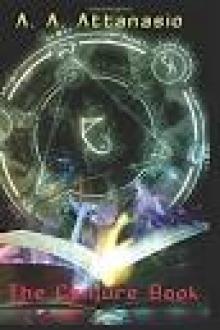 The Conjure Book
The Conjure Book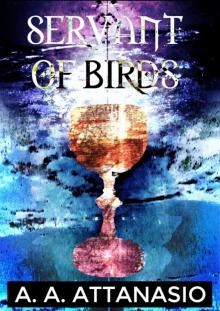 Servant of Birds
Servant of Birds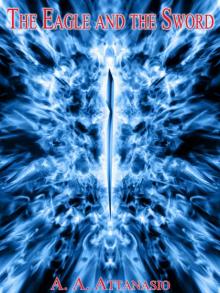 The Eagle and the Sword (The Perilous Order of Camelot Book 2)
The Eagle and the Sword (The Perilous Order of Camelot Book 2)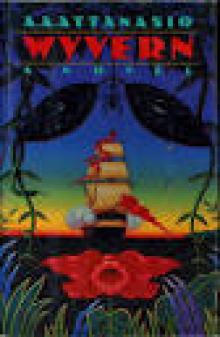 Wyvern
Wyvern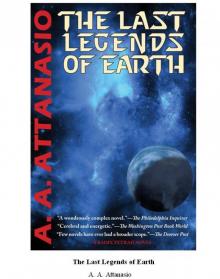 The Last Legends of Earth
The Last Legends of Earth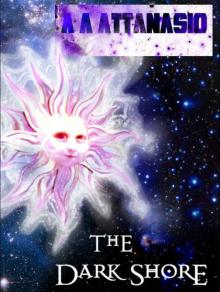 The Dark Shore (The Dominions of Irth Book 1)
The Dark Shore (The Dominions of Irth Book 1)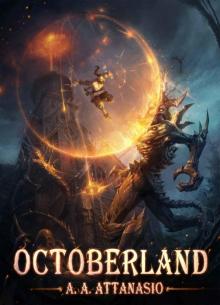 Octoberland (The Dominions of Irth Book 3)
Octoberland (The Dominions of Irth Book 3)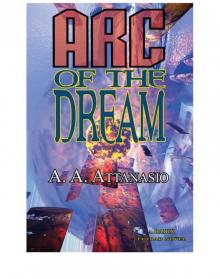 Arc of the Dream
Arc of the Dream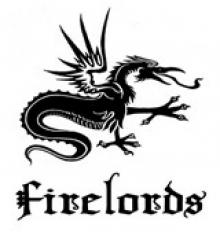 p1b6fn7sdh1ln0g4v1pkvkuqim54
p1b6fn7sdh1ln0g4v1pkvkuqim54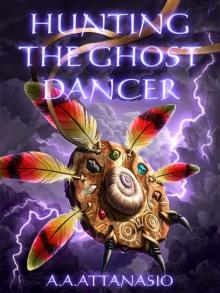 Hunting the Ghost Dancer
Hunting the Ghost Dancer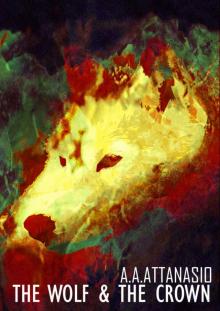 The Wolf and the Crown (The Perilous Order of Camelot Book 3)
The Wolf and the Crown (The Perilous Order of Camelot Book 3)